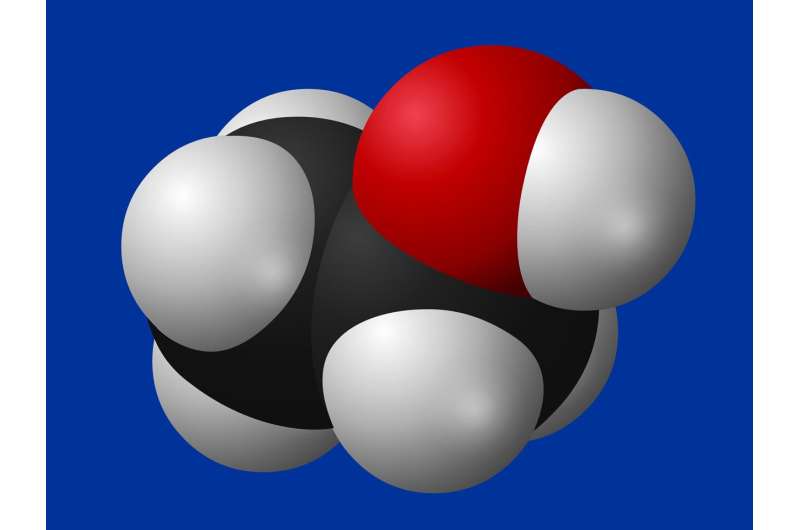UCLA chemists have found a big problem with a fundamental rule of organic chemistry that has been around for 100 years—it’s just not true. And they say, It’s time to rewrite the textbooks.
Organic molecules, those made primarily of carbon, are characterized by having specific shapes and arrangements of atoms. Molecules known as olefins have double bonds, or alkenes, between two carbon atoms. The atoms, and those attached to them, ordinarily lie in the same 3D plane. Molecules that deviate from this geometry are uncommon.
The rule in question, known as Bredt’s rule in textbooks, was reported in 1924. It states that molecules cannot have a carbon-carbon double bond at the ring junction of a bridged bicyclic molecule, also known as the “bridgehead” position. The double bond on these structures would have distorted, twisted geometrical shapes that deviate from the rigid geometry of alkenes taught in textbooks.
Olefins are useful in pharmaceutical research, but Bredt’s rule has constrained the kind of synthetic molecules scientists can imagine making with them and prevented possible applications of their use in drug discovery.
A paper published by UCLA scientists in the journal Science has invalidated that idea. They show how to make several kinds of molecules that violate Bredt’s rule, called anti-Bredt olefins, or ABOs, allowing chemists to find practical ways to make and use them in reactions.
“People aren’t exploring anti-Bredt olefins because they think they can’t,” said corresponding author Neil Garg, the Kenneth N. Trueblood Distinguished Professor of Chemistry and Biochemistry at UCLA.
“We shouldn’t have rules like this—or if we have them, they should only exist with the constant reminder that they’re guidelines, not rules. It destroys creativity when we have rules that supposedly can’t be overcome.”
Garg’s lab treated molecules called silyl (pseudo)halides with a fluoride source to induce an elimination reaction that forms ABOs. Because ABOs are highly unstable, they included another chemical that can “trap” the unstable ABO molecules and yield products that can be isolated.
The resulting reaction indicated that ABOs can be generated and trapped to give structures of practical value.
“There’s a big push in the pharmaceutical industry to develop chemical reactions that give three-dimensional structures like ours because they can be used to discover new medicines,” Garg said.
“What this study shows is that contrary to one hundred years of conventional wisdom, chemists can make and use anti-Bredt olefins to make value-added products.”
The authors on the study include UCLA graduate students and postdoctoral scholars, Luca McDermott, Zachary Walters, Sarah French, Allison Clark, Jiaming Ding and Andrew Kelleghan, as well as Garg’s longstanding collaborator and computational chemistry expert Ken Houk, a distinguished research professor at UCLA.
More information:
Luca McDermott et al, A solution to the anti-Bredt olefin synthesis problem, Science (2024). DOI: 10.1126/science.adq3519. www.science.org/doi/10.1126/science.adq3519
Provided by
University of California, Los Angeles
Citation:
Chemists just broke a 100-year-old rule and say it’s time to rewrite the textbooks (2024, October 31)
retrieved 3 November 2024
from https://phys.org/news/2024-10-chemists-broke-year-rewrite-textbooks.html
This document is subject to copyright. Apart from any fair dealing for the purpose of private study or research, no
part may be reproduced without the written permission. The content is provided for information purposes only.

